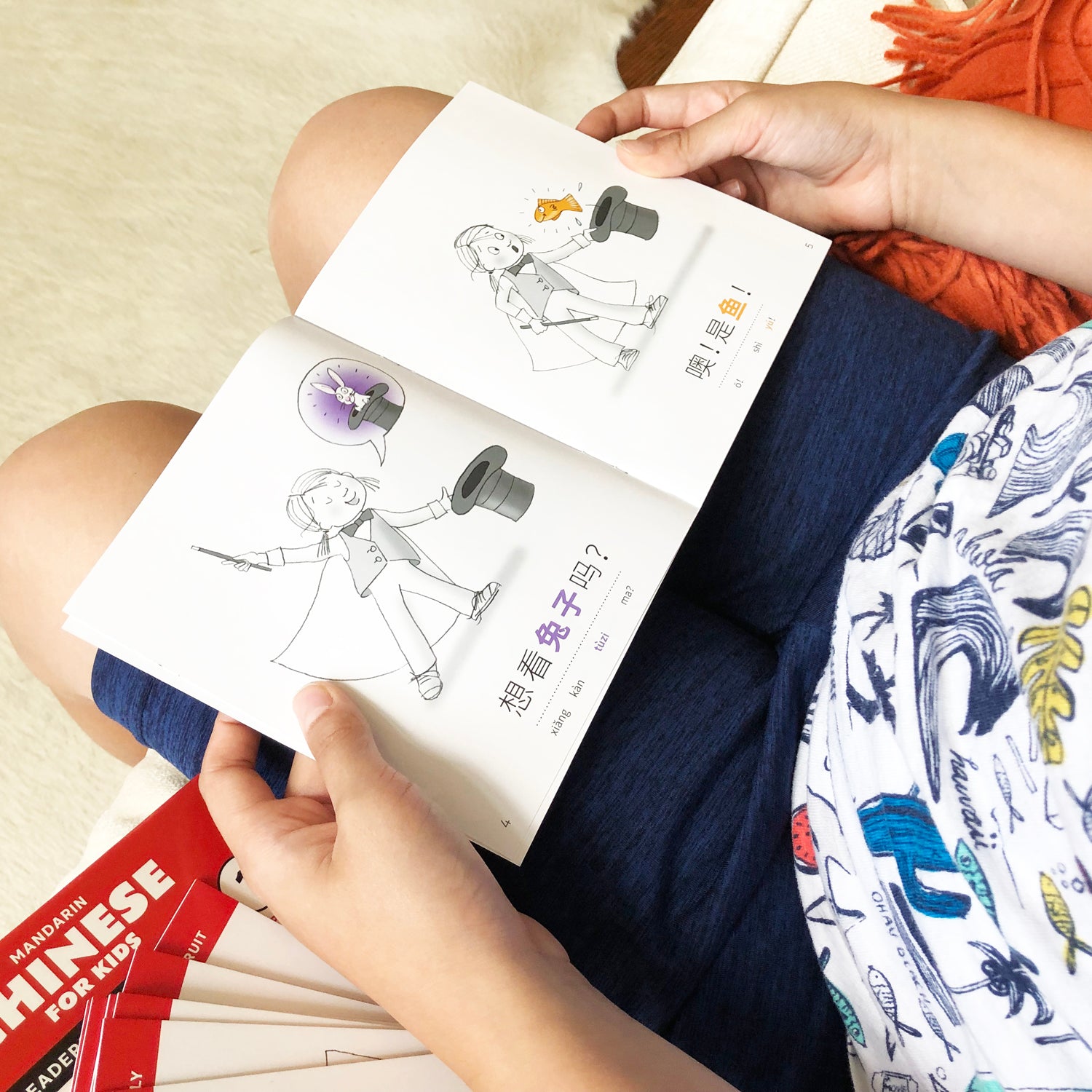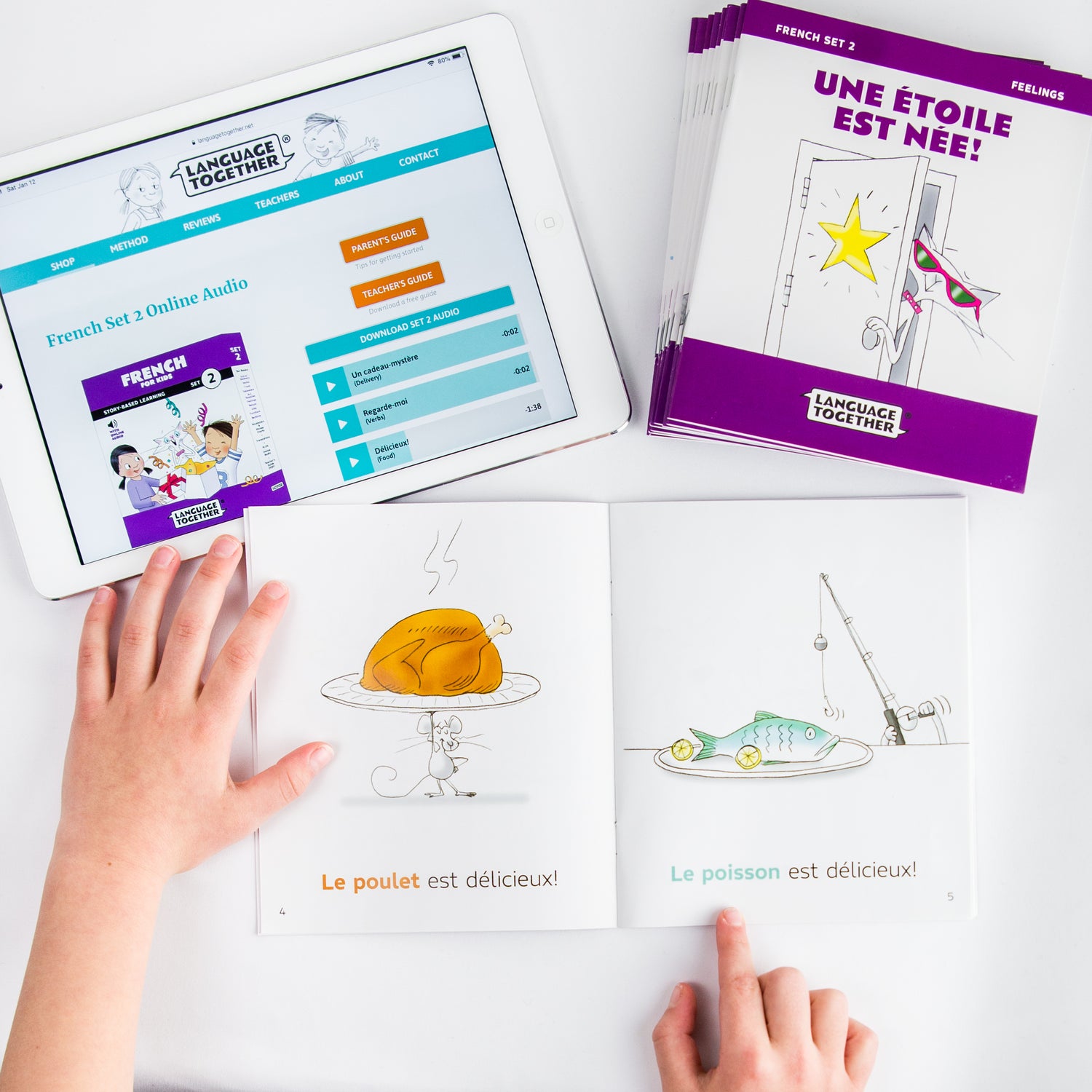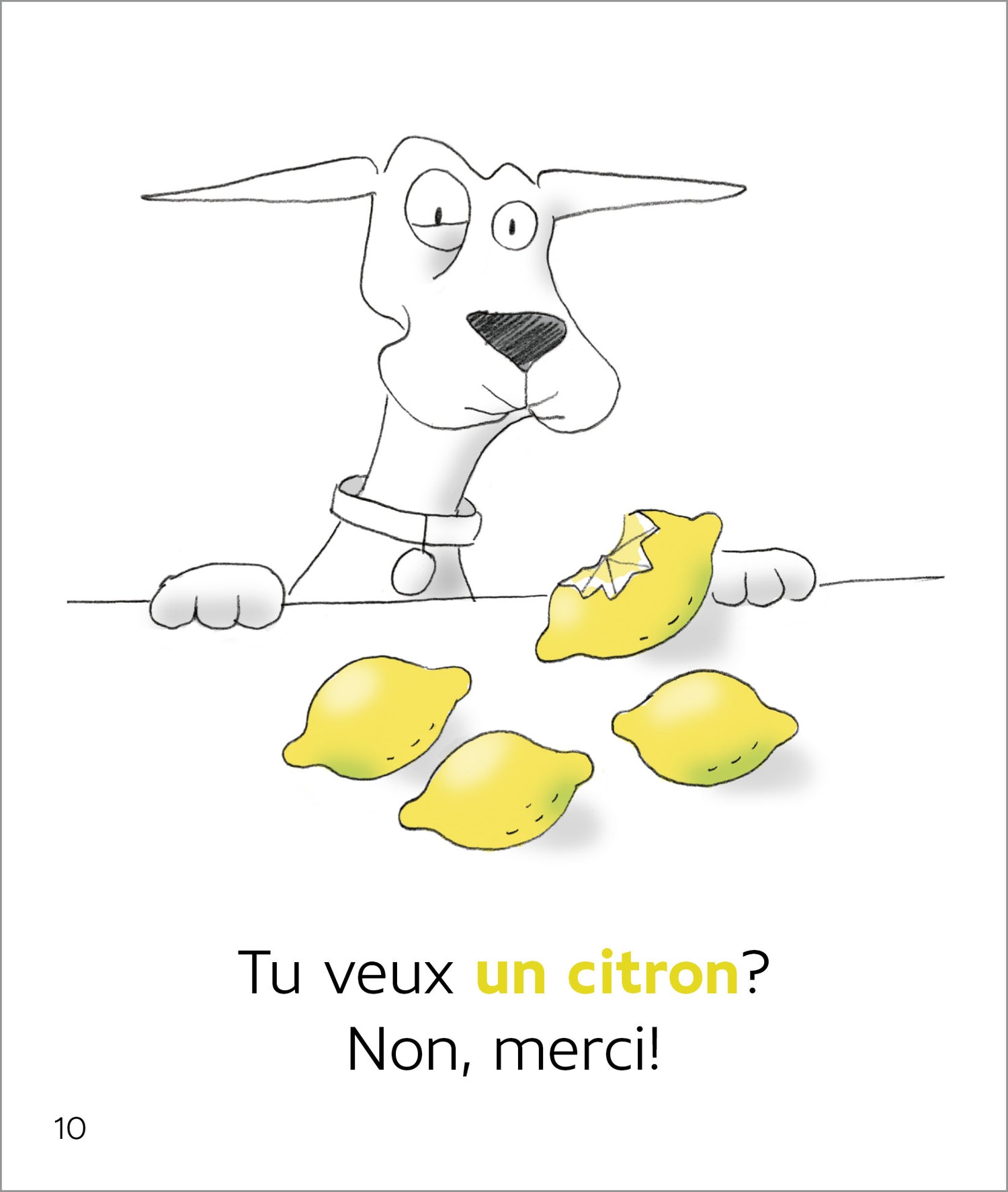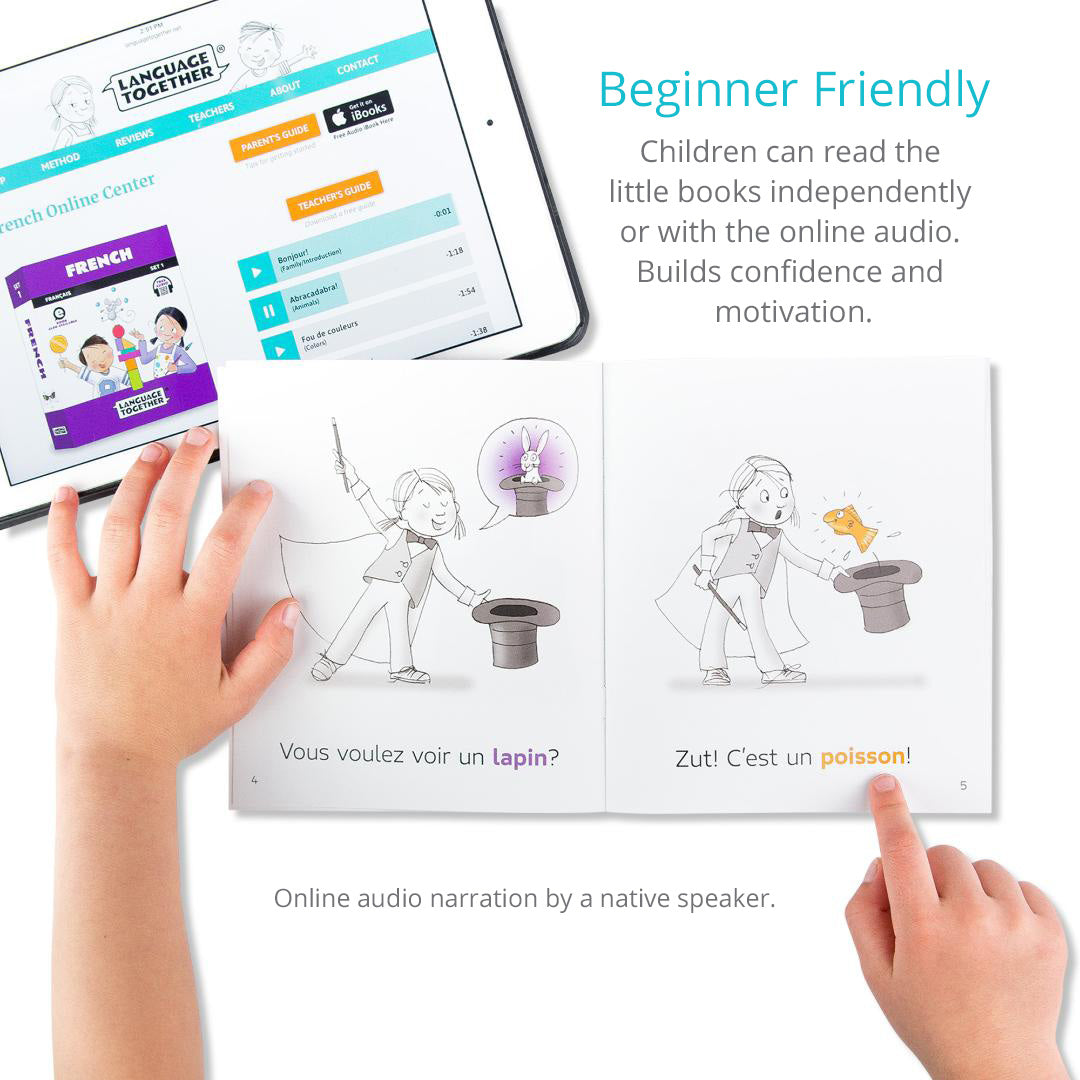Spot Color Immersion Method®

Designed to spark early confidence ... and smiles!
Our unique approach helps children fall in love with new languages from the very start. Beginners can finish our sets all by themselves—or with help from the online narration—fueling them with a sense of accomplishment and motivation to keep learning.

Story-based immersion
Our words and pictures tell the whole story—no translations are necessary. Children figure out the meaning, just like they do in the real world.
Our little stories provide the kind of comprehensible input that helps beginners start using language without even realizing they’re learning.

Native Speaker Audio
Audio recordings by native speakers provide a good verbal model, promoting more accurate speaking and comprehension skills. The online audio allows kids to independently review and enjoy stories without help from adults.

Flashcards with a Story
We turn basic flashcards into stories with meaning and context—transforming a rote learning process into an enhanced educational experience.
Step by step, our deceptively simple stories introduce high frequency words and phrases. Target vocabulary is woven into short stories that make kids laugh—and forget they are actually learning.

Context
Context makes learning relevant and helps kids make connections faster. We present familiar scenarios that kids will also enjoy—toys, colors, shapes, eating breakfast, getting dressed, and more.
Repetition
Young kids thrive on repetition and patterns. Each book is built on a clear repetition motif, giving kids structure and opportunities to practice and learn.
